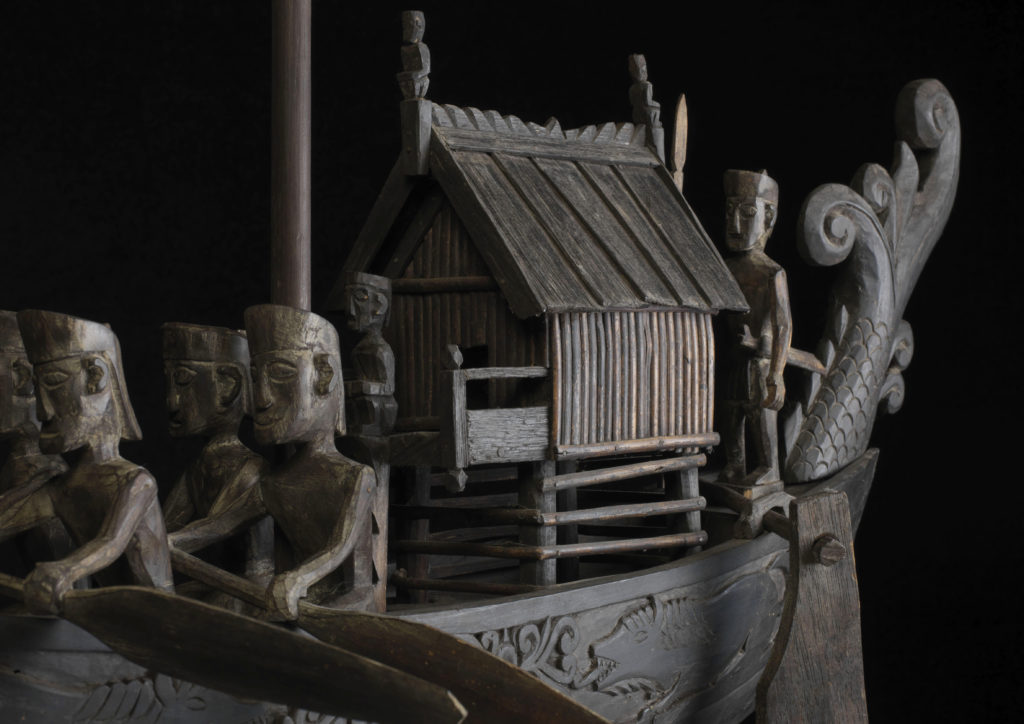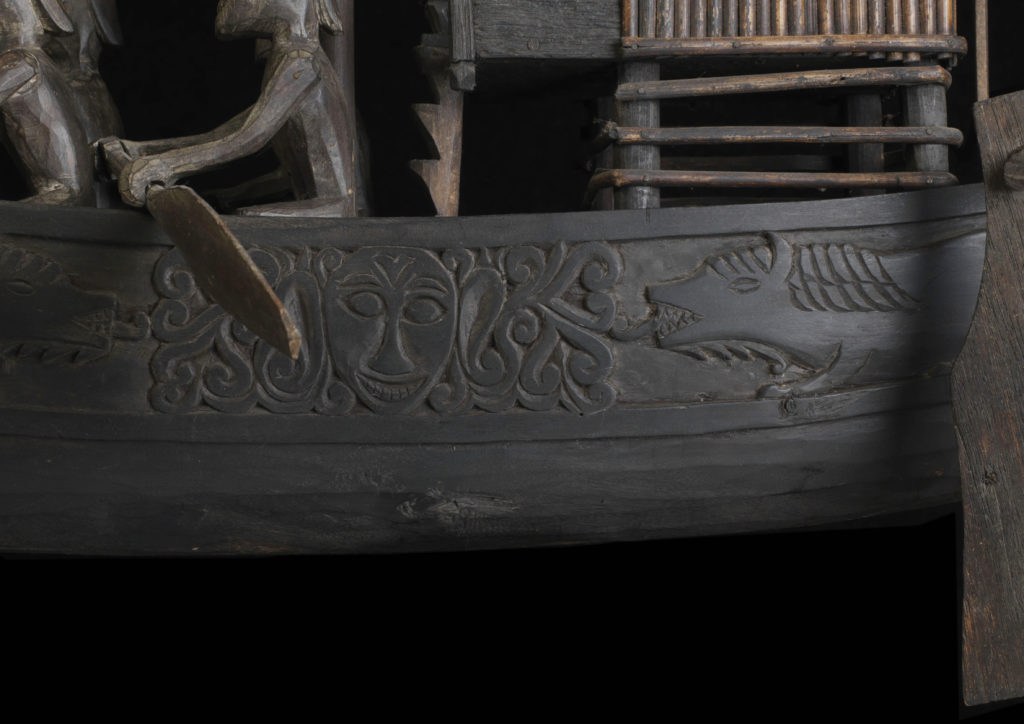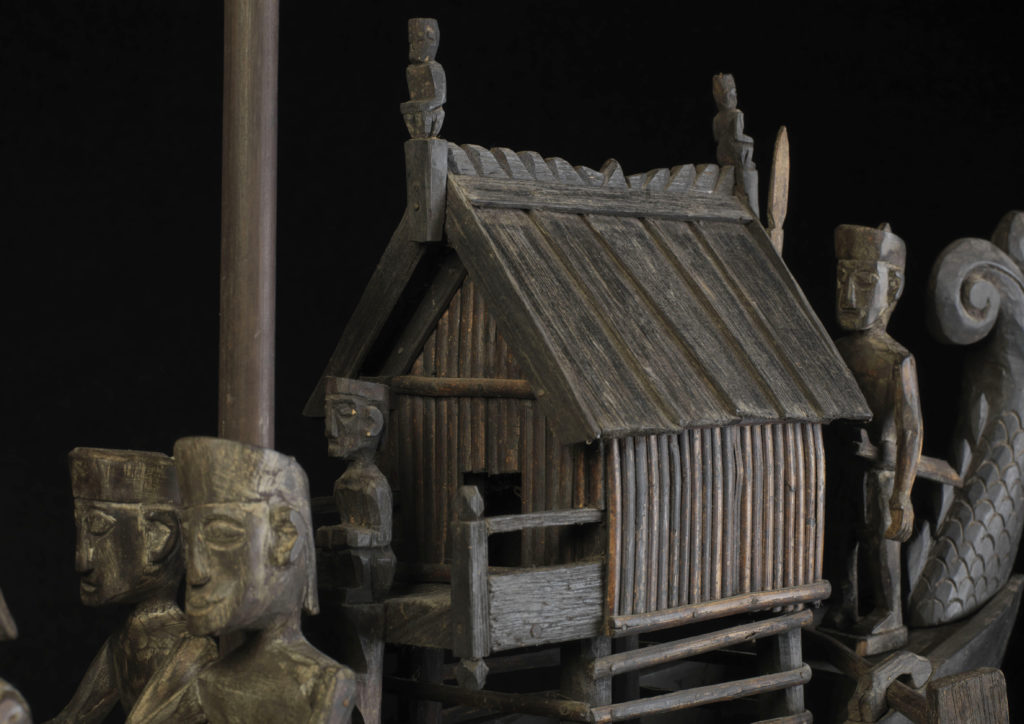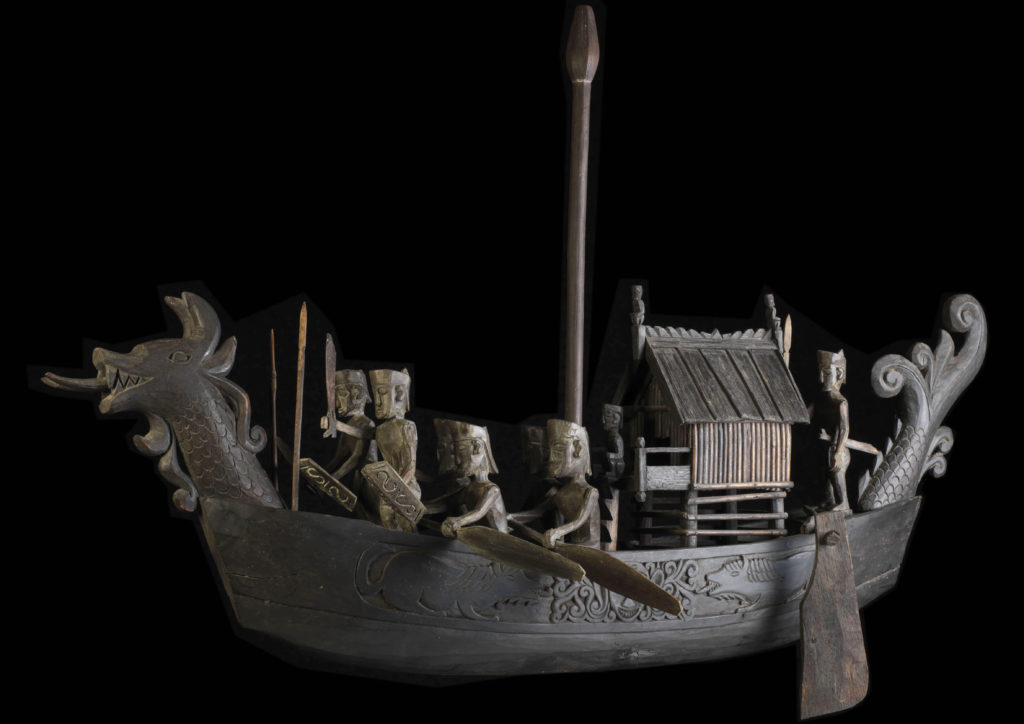Soulship “Telun” (I)
This soul ship is carved out of wood, the figures, cabin and mast are individually made.The wooden surface is painted with black pigments.
The soul ship (telun) is an old concept of the Dayak on Borneo, which originally probably goes back to the Egyptian sun barque of Ra. It was believed that the souls rise from the underworld in the east and “go down” in the west and enter the underworld in a similar way to the sun. The afterlife is therefore always in the west. It is believed that the dead man travels on a river, which first begins wide and at the end leads through a narrow gorge with a whirlpool of fire at the end, the entrance to the realm of the dead. In the cottage is the soul, the things on the rack are precious pusaka, for example gongs, which were given to the dead man. They shine on the way to the afterlife, that is why they are important for the journey. The tattoos of the dead man, which stand for personal achievements, e.g. also those of headhunting, also shine on the way. Before the ceremony of the Tantolak (first burial) the dead man was dressed in his most precious clothes and surrounded with his personal belongings. The dead without merit or possessions can therefore not find the way and cannot be reincarnated in their descendants. They wander around until they can “travel” with a deserving nobleman in the context of a secondary burial. Meanwhile, the rice that was sprinkled on the corpse for the first burial is used by the rice soul Gana to provide food for the deceased in the afterlife. The second burial, the Tiwah-festival(Feast of Redemption), usually takes place months or even years after the death of the person. While the deceased waits for his or her redemption in the hereafter, his or her soul resides in a wooden board on which a ship of the dead is painted and is located at the house of the deceased (see Soul ship II ).
The long period between the two burials is due to the fact that the Tiwah festival is a very elaborate and expensive festival and can last up to a month. Therefore nowadays often several deceased are celebrated together.
During the festival it was customary to carve hampatong (small wooden sculptures), which are supposed to represent the slaves of the deceased.
It was also believed that blood would strengthen the sun or the boat on the way, possibly because it rises and sets red. That is why the path of the sun and the soul is usually depicted with blood sacrifices, including headhunting. Headhunting was essential for burials of nobles. This is probably also the meaning of the octagonal star, which is often found on the mandau. (surya Majapahit, the “Sun of Majapahit”).
The ships with a hornbill bow are called ba-nama tinggang (“big/high name”) and always represent nobility, while the dragon bow (aso) is the “standard model”.
| Object | Soulship „Telun“ |
| Culture | Borneo, Dayak |
| Time | 20th century |
| Dimensions | Height 60 cm, length 95 cm |
| Material | Wood, pigments |








